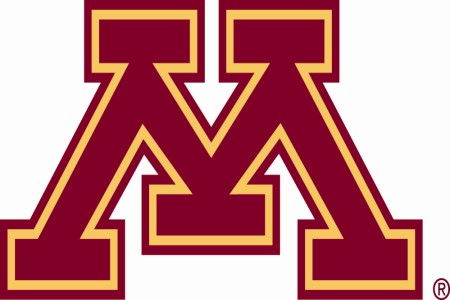Vitreous Chemistry Analysis
| Status: | Recruiting |
|---|---|
| Healthy: | No |
| Age Range: | 18 - 90 |
| Updated: | 12/8/2016 |
| Start Date: | May 2013 |
| End Date: | December 2016 |
| Contact: | Dara Koozekanani, M.D. |
| Phone: | 612-625-4400 |
The aim of this study is to expand the understanding of the vitreous, its solute chemistry,
and the normal relationship of that chemistry to the chemistry of the systemic circulation
in humans.
Sample human vitreous from patients undergoing vitrectomy surgery and compare to results of
metabolic chemistry panel from subject.
Allow the research team to extract .2ml sample of the .5ml - 1.0ml vitreous that is normally
extracted during a routine undiluted vitreous biopsy, a standard procedure performed for
various indications. Blood draw for metabolic chemistry panel (1-2 ml).
and the normal relationship of that chemistry to the chemistry of the systemic circulation
in humans.
Sample human vitreous from patients undergoing vitrectomy surgery and compare to results of
metabolic chemistry panel from subject.
Allow the research team to extract .2ml sample of the .5ml - 1.0ml vitreous that is normally
extracted during a routine undiluted vitreous biopsy, a standard procedure performed for
various indications. Blood draw for metabolic chemistry panel (1-2 ml).
The proposed method for obtaining antemortem vitreous samples is during an otherwise
scheduled vitrectomy surgery that is being performed for a medically necessary indication.
Virectomy surgery is a commonly performed eye surgery during which the vitreous humor is
removed from the eye. Three ports are created through the sclera for access into the eye.
One port is for a light to provide illumination for visualization, one port is for the
vitrector, which simultaneously aspirates the vitreous and cuts its intrinsic fibers, and
one port is for an infusion line which keeps the eye inflated with saline as the vitreous
humor is removed. typically the aspiration is performed automatically by the vitrectomy
machine. For an undiluted vitreous biopsy, which is standard procedure performed for various
indications, the technique must be slightly modified. In particular, the infusion line is
not turned on initially to avoid diluting the specimen with saline fluid. The vitrector
aspiration line is connected to a syringe instead of the vitrectomy machine, and the syringe
is used to both manually provide the aspiration and to collect the undiluted specimen. As
soon as an adequate volume is collected, the infusion line is turned on and the aspiration
line is reconnected to the vitrectomy machine. Volumes of 0.5 to 1.0 ml are routinely
collected with this technique.
Subjects will be enrolled from adult patient already undergoing vitrectomy surgery for
various retinal conditions. Only one eye per subject will be enrolled and the enrollment
target for the first year is 50 subjects.
Specimens would be obtained during the subject's otherwise planned vitrectomy. The
vitrectomy would be started in the usual way, except that the standard modifications would
be made for an undiluted vitreous biopsy as discussed above. A 0.2 mL sample would be
obtained during the vitreous biopsy. This is the smallest sample the hospital laboratory can
analyze and is smaller than what is typically obtained during an undiluted vitreous biopsy.
scheduled vitrectomy surgery that is being performed for a medically necessary indication.
Virectomy surgery is a commonly performed eye surgery during which the vitreous humor is
removed from the eye. Three ports are created through the sclera for access into the eye.
One port is for a light to provide illumination for visualization, one port is for the
vitrector, which simultaneously aspirates the vitreous and cuts its intrinsic fibers, and
one port is for an infusion line which keeps the eye inflated with saline as the vitreous
humor is removed. typically the aspiration is performed automatically by the vitrectomy
machine. For an undiluted vitreous biopsy, which is standard procedure performed for various
indications, the technique must be slightly modified. In particular, the infusion line is
not turned on initially to avoid diluting the specimen with saline fluid. The vitrector
aspiration line is connected to a syringe instead of the vitrectomy machine, and the syringe
is used to both manually provide the aspiration and to collect the undiluted specimen. As
soon as an adequate volume is collected, the infusion line is turned on and the aspiration
line is reconnected to the vitrectomy machine. Volumes of 0.5 to 1.0 ml are routinely
collected with this technique.
Subjects will be enrolled from adult patient already undergoing vitrectomy surgery for
various retinal conditions. Only one eye per subject will be enrolled and the enrollment
target for the first year is 50 subjects.
Specimens would be obtained during the subject's otherwise planned vitrectomy. The
vitrectomy would be started in the usual way, except that the standard modifications would
be made for an undiluted vitreous biopsy as discussed above. A 0.2 mL sample would be
obtained during the vitreous biopsy. This is the smallest sample the hospital laboratory can
analyze and is smaller than what is typically obtained during an undiluted vitreous biopsy.
Inclusion Criteria:
- >= 18 years of age, diagnosed to have epiretinal membrane, macular hole, or
vitreomacular traction, Otherwise would be needing to undergo vitrectomy procedure
Exclusion Criteria:
- Children & pregnant female Vitrectomy for foreign body extraction
We found this trial at
1
site
Univ of Minnesota With a flagship campus in the heart of the Twin Cities, and...
Click here to add this to my saved trials
